Posted on February 23rd, 2019 by Mary Lord
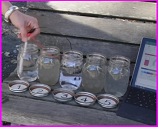 Middle school students explore how fertilizers and other solids affect water quality by building and using sensors to measure the electrical conductivity of water samples. They then create data tables and investigate possible sources of pollutants using digital visualization tools.
Middle school students explore how fertilizers and other solids affect water quality by building and using sensors to measure the electrical conductivity of water samples. They then create data tables and investigate possible sources of pollutants using digital visualization tools.
Read More
Filed under: Class Activities, Grades 6-8, Grades 9-12, K-12 Outreach Programs, Lesson Plans | Comments Off on Measuring Water Quality to Assess Human Impact
Tags: arduino, Class Activities, data analysis, electrical circuits, Electrical Engineering, Environmental Engineering, Excel, Grades 6-8, HackingSTEM Microsoft, hydrology, Lesson Plan, Pollution, sensors, water quality
Posted on January 9th, 2019 by Mary Lord
 Middle school students address misconceptions and learn about thermal energy transfer while investigating the insulating properties of various materials. They then follow the engineering design process to create, test, and redesign a structure (igloo) to keep an ice cube (penguin) from melting.
Middle school students address misconceptions and learn about thermal energy transfer while investigating the insulating properties of various materials. They then follow the engineering design process to create, test, and redesign a structure (igloo) to keep an ice cube (penguin) from melting.
Read More
Filed under: Class Activities, Grades 6-8, Grades 9-12, Lesson Plans | Comments Off on Save the Penguins
Tags: arctic engineering, Class Activities, Curriculum, Energy, Environmental Engineering, Grades 6-8, Grades 9-12, habitat, heat transfer misconceptions, ice, insulation, Lesson Plan, NGSS aligned, Physics, polar ice, Save the Penguins
Posted on January 3rd, 2019 by Mary Lord
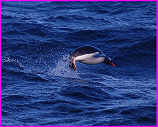 Middle and high school students learn about the importance of the polar regions by connecting with scientists and the data generated by their cutting-edge research on penguins and ocean environments.
Middle and high school students learn about the importance of the polar regions by connecting with scientists and the data generated by their cutting-edge research on penguins and ocean environments.
Read More
Filed under: Class Activities, Grades 6-8, Grades 9-12, Web Resources | Comments Off on Polar Ice
Tags: Class Activities, Climate Change, Environmental Engineering, Grades 6-8, Grades 9-12, Lesson Plan, Liesl Hotaling, Marine Science, NSTA, oceanography, penguins, polar ice, polar research, Resources for Teachers
Posted on January 2nd, 2019 by Mary Lord
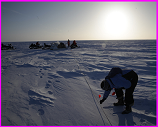 Geoengineer Leslie Field seeks to mitigate climate change by restoring ice in the Arctic. Her solution? Spread an environmentally safe silica sand in strategic locations to reflect heat “like a white shirt on a hot summer day” and protect the frozen water below.
Geoengineer Leslie Field seeks to mitigate climate change by restoring ice in the Arctic. Her solution? Spread an environmentally safe silica sand in strategic locations to reflect heat “like a white shirt on a hot summer day” and protect the frozen water below.
Read More
Filed under: Special Features | Comments Off on Arctic “Dust”
Tags: arctic ice, Climate Change, Environmental Engineering, Environmental science, geoengineering, global warming, Harvard Solar Geoengineering Research Program, ice911, Leslie Field, Public Policy, Web Resources, Women in Engineering
Posted on August 9th, 2018 by Mary Lord
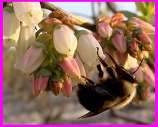 Bees are among North America’s most important agricultural asset, increasing yields in roughly three-quarters of our crops. But as researchers funded by the National Science Foundation are learning, plants need a diversity of pollinators – and everyday gardeners can help.
Bees are among North America’s most important agricultural asset, increasing yields in roughly three-quarters of our crops. But as researchers funded by the National Science Foundation are learning, plants need a diversity of pollinators – and everyday gardeners can help.
Read More
Filed under: K-12 Outreach Programs, Special Features | Comments Off on Bee Biodiversity Critical for Crops
Tags: agriculture, bees, crops, ecology, Environmental Engineering, Environmental science, farming, National Science Foundation, NSF, pollinators, Rachael Winree, Research, Rutgers
Posted on July 26th, 2018 by Mary Lord
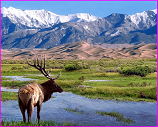 Their work may be invisible when you visit America’s 758 wilderness areas, but engineers have played a key role in preserving and improving access to the country’s most pristine spots, including “road kill apps” and critter crossings to measure and reduce collisions between people and wildlife.
Their work may be invisible when you visit America’s 758 wilderness areas, but engineers have played a key role in preserving and improving access to the country’s most pristine spots, including “road kill apps” and critter crossings to measure and reduce collisions between people and wildlife.
Read More
Filed under: Special Features | Comments Off on Wilderness Engineers
Tags: campground, construction, engineers, Environmental Engineering, National Park Service, nature, roads, U.S. Forest Service, UC Davis Road Ecology Center, wilderness, wildlife
Posted on July 26th, 2018 by Mary Lord
 High school students design a permanent guest village within the Saguaro National Park in Arizona after studying the desert ecology. Their designs must provide a true desert experience for visitors while emphasizing sustainable design, protecting the natural environment, and conserving energy and resources.
High school students design a permanent guest village within the Saguaro National Park in Arizona after studying the desert ecology. Their designs must provide a true desert experience for visitors while emphasizing sustainable design, protecting the natural environment, and conserving energy and resources.
Read More
Filed under: Class Activities, Grades 9-12, Lesson Plans | Comments Off on Designing Desert Digs
Tags: bio-inspired design, Biomimicry, Class Activities, cooling, desert, eco-village, ecology, Energy, Engineering Design Process, environment, Environmental Engineering, Grades 9-12, habitat, heat, Lesson Plan, Saguaro National Park, shelter, solar power, Sustainability, tourist village
Posted on April 20th, 2018 by Mary Lord
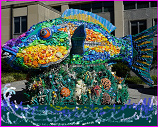 Clean a beach, create art, or help monitor marine debris as a citizen scientist. Check out these lesson plans and other resources for celebrating World Oceans Day June 8.
Clean a beach, create art, or help monitor marine debris as a citizen scientist. Check out these lesson plans and other resources for celebrating World Oceans Day June 8.
Read More
Filed under: For Teachers, Lesson Plans, Special Features, Web Resources | Comments Off on Tackle Plastics for World Oceans Day
Tags: Citizen Science, Competitions for Students, Environmental Engineering, Internet Resources, marine debris, marine debris monitoring and assessment project, Marine Debris Program art contest, NOAA, ocean plastic, Teacher Resources, University of Georgia college of engineering, washedaway.org, Web Resources, world oceans day
Posted on April 18th, 2018 by Mary Lord
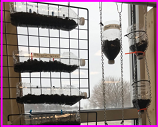 Students in grades 6 to 8 explore food production problems related to population growth and then engineer a model vertical farm as a potential solution in a fictional community, Greentown, culminating with a presentation to the imaginary city’s “legislators.”
Students in grades 6 to 8 explore food production problems related to population growth and then engineer a model vertical farm as a potential solution in a fictional community, Greentown, culminating with a presentation to the imaginary city’s “legislators.”
Read More
Filed under: Class Activities, Grades 6-8, K-12 Outreach Programs, Lesson Plans, Web Resources | Comments Off on Engineer a Vertical Farm
Tags: agriculture, Class Activities, crops, EiE, Engineering Design Process, engineering grand challenges, Engineering is Elementary, Engineering is Everywhere, Environmental Engineering, Environmental science, food supply, Grades 6-8, greenhouse, plant science, school gardens, STEM education, vertical farming, Web Resources
 Middle school students explore how fertilizers and other solids affect water quality by building and using sensors to measure the electrical conductivity of water samples. They then create data tables and investigate possible sources of pollutants using digital visualization tools.
Middle school students explore how fertilizers and other solids affect water quality by building and using sensors to measure the electrical conductivity of water samples. They then create data tables and investigate possible sources of pollutants using digital visualization tools.








 Middle school students address misconceptions and learn about thermal energy transfer while investigating the insulating properties of various materials. They then follow the engineering design process to create, test, and redesign a structure (igloo) to keep an ice cube (penguin) from melting.
Middle school students address misconceptions and learn about thermal energy transfer while investigating the insulating properties of various materials. They then follow the engineering design process to create, test, and redesign a structure (igloo) to keep an ice cube (penguin) from melting.  Middle and high school students learn about the importance of the polar regions by connecting with scientists and the data generated by their cutting-edge research on penguins and ocean environments.
Middle and high school students learn about the importance of the polar regions by connecting with scientists and the data generated by their cutting-edge research on penguins and ocean environments. Geoengineer Leslie Field seeks to mitigate climate change by restoring ice in the Arctic. Her solution? Spread an environmentally safe silica sand in strategic locations to reflect heat “like a white shirt on a hot summer day” and protect the frozen water below.
Geoengineer Leslie Field seeks to mitigate climate change by restoring ice in the Arctic. Her solution? Spread an environmentally safe silica sand in strategic locations to reflect heat “like a white shirt on a hot summer day” and protect the frozen water below. Bees are among North America’s most important agricultural asset, increasing yields in roughly three-quarters of our crops. But as researchers funded by the National Science Foundation are learning, plants need a diversity of pollinators – and everyday gardeners can help.
Bees are among North America’s most important agricultural asset, increasing yields in roughly three-quarters of our crops. But as researchers funded by the National Science Foundation are learning, plants need a diversity of pollinators – and everyday gardeners can help. Their work may be invisible when you visit America’s 758 wilderness areas, but engineers have played a key role in preserving and improving access to the country’s most pristine spots, including “road kill apps” and critter crossings to measure and reduce collisions between people and wildlife.
Their work may be invisible when you visit America’s 758 wilderness areas, but engineers have played a key role in preserving and improving access to the country’s most pristine spots, including “road kill apps” and critter crossings to measure and reduce collisions between people and wildlife. High school students design a permanent guest village within the Saguaro National Park in Arizona after studying the desert ecology. Their designs must provide a true desert experience for visitors while emphasizing sustainable design, protecting the natural environment, and conserving energy and resources.
High school students design a permanent guest village within the Saguaro National Park in Arizona after studying the desert ecology. Their designs must provide a true desert experience for visitors while emphasizing sustainable design, protecting the natural environment, and conserving energy and resources. Clean a beach, create art, or help monitor marine debris as a citizen scientist. Check out these lesson plans and other resources for celebrating World Oceans Day June 8.
Clean a beach, create art, or help monitor marine debris as a citizen scientist. Check out these lesson plans and other resources for celebrating World Oceans Day June 8. Students in grades 6 to 8 explore food production problems related to population growth and then engineer a model vertical farm as a potential solution in a fictional community, Greentown, culminating with a presentation to the imaginary city’s “legislators.”
Students in grades 6 to 8 explore food production problems related to population growth and then engineer a model vertical farm as a potential solution in a fictional community, Greentown, culminating with a presentation to the imaginary city’s “legislators.”